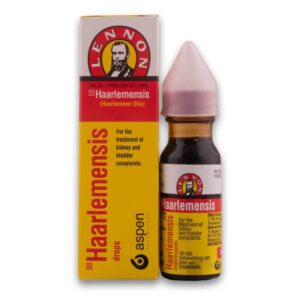Have you ever heard of Haarlemensis uses for skin? If not, you’re missing out on a powerful ingredient that can do wonders for your skin! This unique substance has been used for centuries in various cultures for its therapeutic properties. In this article, we’ll explore the benefits of Haarlemensis for your skin and how it can improve your complexion.
What is Haarlemensis?
Haarlemensis, also known as Haarlem Oil or Oil of Sulphur, is a natural substance that has been used since the Middle Ages for its therapeutic properties. It is made by mixing sulfur with other ingredients such as turpentine, linseed oil, and eggshells. This mixture is then distilled to create a concentrated oil that is rich in sulfur compounds.
Haarlemensis is a versatile ingredient that has been used for various purposes over the centuries. It was commonly used to treat skin conditions such as eczema, acne, and psoriasis. It was also used as a remedy for digestive issues, respiratory problems, and joint pain.
Haarlemensis Uses for Skin Benefits
Haarlemensis has many benefits for your skin. Here are some of the ways this unique ingredient can improve your complexion:
Reduces Inflammation
One of the most significant benefits of Haarlemensis for your skin is its anti-inflammatory properties. It can help reduce inflammation caused by skin conditions such as acne, eczema, and psoriasis. Inflammation is one of the main causes of skin irritation, so reducing inflammation can help soothe irritated skin.
Improves Skin Texture
Haarlemensis can also improve the texture of your skin. It can help unclog pores, which can reduce the appearance of acne and blackheads. It can also help reduce the size of pores, which can give your skin a smoother appearance.
Promotes Wound Healing

Haarlemensis has been shown to promote wound healing. It can help speed up the healing process of cuts, scrapes, and other types of skin damage. This is because it has antibacterial properties that can help prevent infection and promote healthy skin.
Reduces Oil Production
Haarlemensis can help reduce the production of oil in your skin. This can be particularly beneficial for those with oily skin or acne-prone skin. By reducing the amount of oil on your skin, you can help prevent acne breakouts.

Fights Free Radicals
Haarlemensis is also rich in antioxidants, which can help fight free radicals. By fighting free radicals, Haarlemensis can help keep your skin looking youthful and healthy.
Haarlemensis Uses for Skin – How to Use
Haarlemensis uses for skin can be used in various ways. Here are some ways you can use this ingredient in your skincare routine:
Face Masks

You can create a face mask using Haarlemensis to help improve the texture of your skin. Simply mix Haarlemensis with other ingredients such as honey, yogurt, or oatmeal, and apply it to your face. Leave it on for 10-15 minutes before rinsing it off with warm water.
Spot Treatment
Haarlemensis can also be used as a spot treatment for acne. Simply apply a small amount of Haarlemensis to the affected area before bed and leave it on overnight. Rinse it off in the morning with warm water.
Skin Creams
Haarlemensis can also be added to your favorite skin cream to boost its therapeutic properties. Simply add a few drops of Haarlemensis to your skin cream and mix it well before applying it to your skin. This can help enhance the benefits of your skin cream and improve your overall complexion.
Bath Soaks

Haarlemensis can also be added to your bathwater to help soothe your skin. Simply add a few drops of Haarlemensis to your bathwater and soak in it for 15-20 minutes. This can help reduce inflammation, improve skin texture, and promote overall relaxation.
Hair Masks
Haarlemensis can also be used to improve the health of your hair. Simply mix Haarlemensis with other ingredients such as coconut oil, honey, or egg yolk, and apply it to your hair. Leave it on for 30 minutes before rinsing it off with warm water. This can help improve the strength and shine of your hair.
Side Effects of Haarlemensis on Skin
The use of Haarlemensis on the skin should be in moderation as it can lead to dryness and redness as a side effect.

However, this depends on your type of skin such as oily, dry or combination.
How to Use Haarlemensis for Bladder Infection
Here’s how to use Haarlemensis for bladder infection:
Simply add 2 or 3 drops in water and drink it.
You can do this twice a day till you feel some relief.

Haarlemensis and Milk Benefits
Haarlemensis and milk benefits include:
Most people use Haarlemensis and milk for its benefits as both offer different advantages.
Milk can provide calcium which is vital for bone health, and nutrients like vitamin D, potassium and protein.
Drinking milk may also help lower the risk of certain diseases like osteoporosis, cardiovascular disease, and type 2 diabetes.
You can add a few drops of Haarlemensis in a glass of milk to help make this a good combination. It can also help decrease the taste but depends on the person who is drinking this concoction.
What Does Haarlemensis Cure
Most people wonder what does Haarlemensis cure because it’s not commonly known but found on most shelves in the pharmacy.

It mainly helps with bladder and kidney infections or complaints.
See also: Haarlemensis and Vaseline for stretch marks
Does Haarlemensis Lighten Skin
No, Haarlemensis is not a skin whitening product. It does help however to fade or eliminate dark spots or marks on the face.
Interesting Facts About Haarlemensis
Haarlemensis was first produced in the 1600s in Haarlem, a city in the Netherlands. It was used as a remedy for various health issues and was considered a miracle cure at the time.
Haarlemensis was widely used during World War II as a treatment for skin conditions and respiratory issues. It was also used to disinfect wounds and prevent infection.
Haarlemensis is still used today in various forms, including pills, ointments, and creams. It is also used in agriculture as a pesticide and fungicide.
Haarlemensis Uses for Skin – Conclusion
Haarlemensis uses for skin is a unique and powerful ingredient that has been used for centuries for its therapeutic properties.
It has many benefits for your skin, including reducing inflammation, improving skin texture, promoting wound healing, reducing oil production, and fighting free radicals. It can be used in various ways, including face masks, spot treatments, skin creams, bath soaks, and hair masks.

